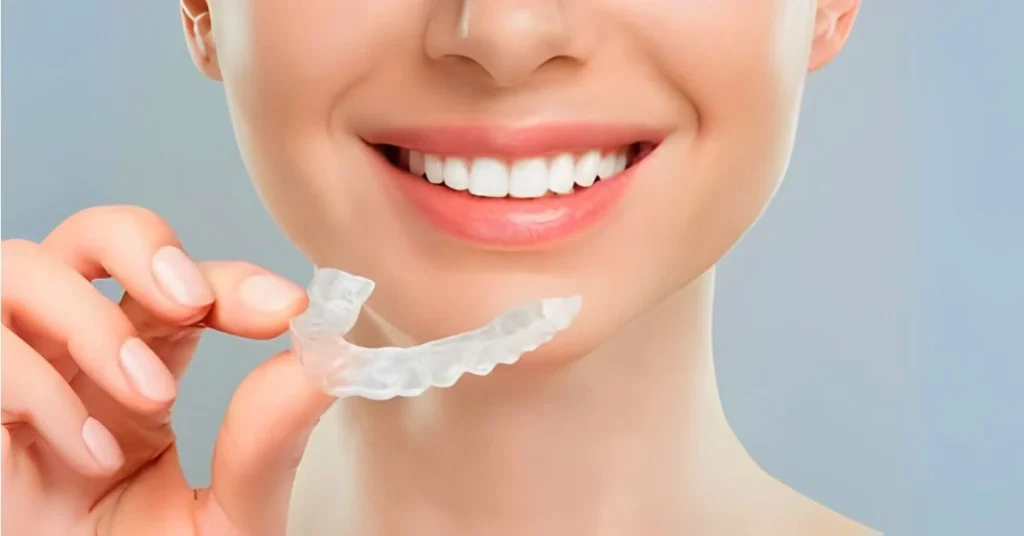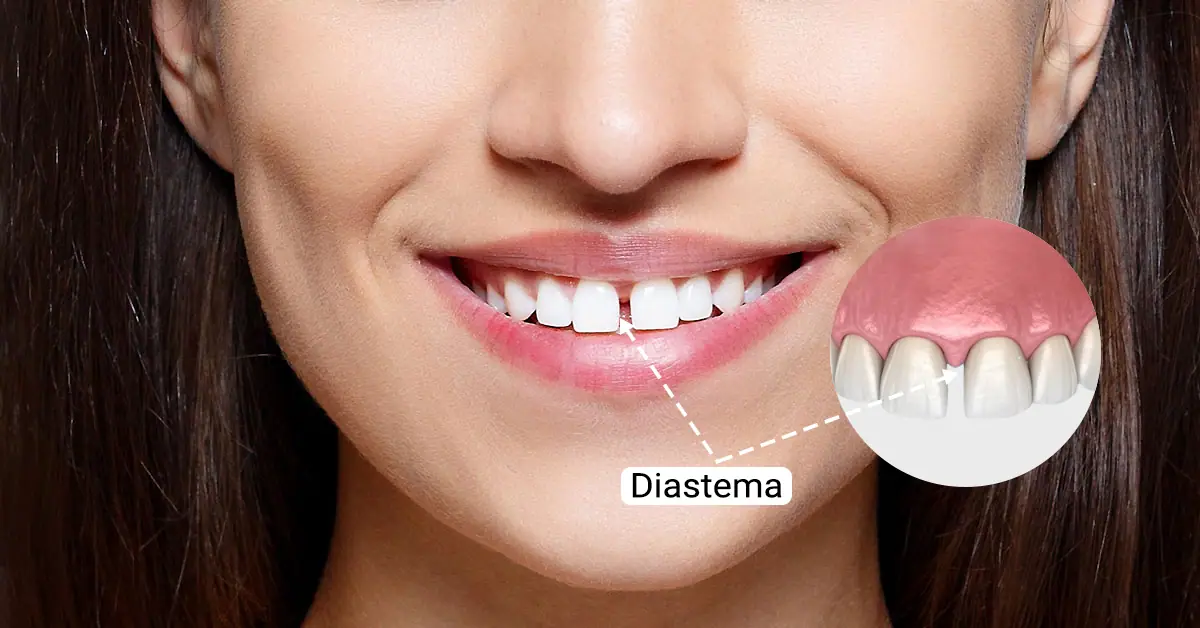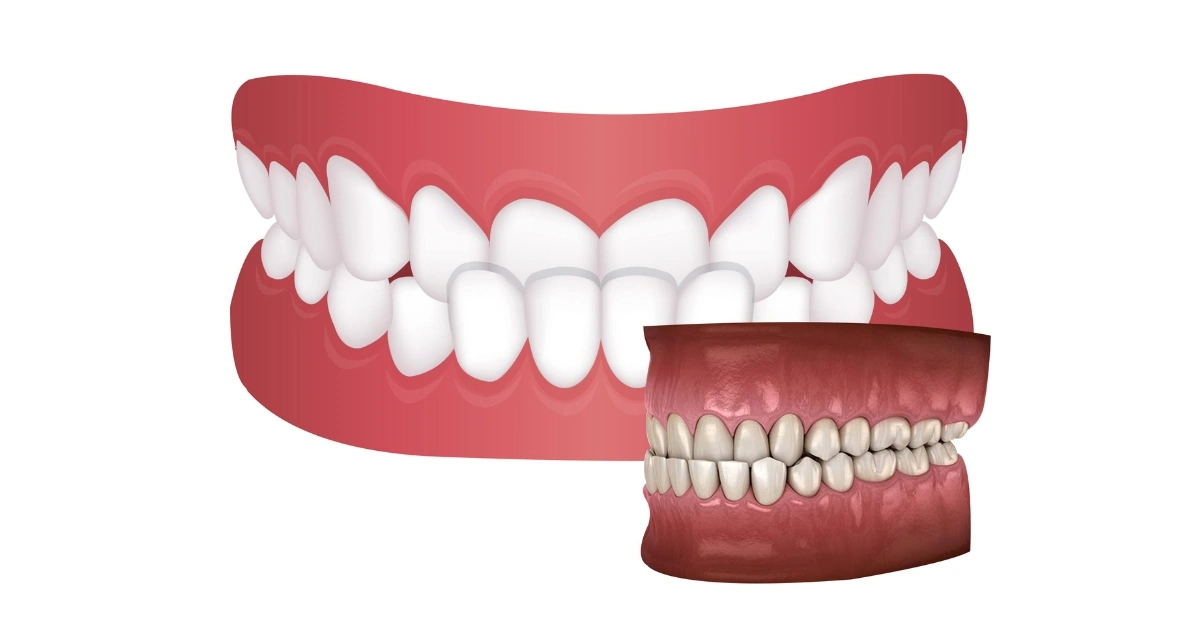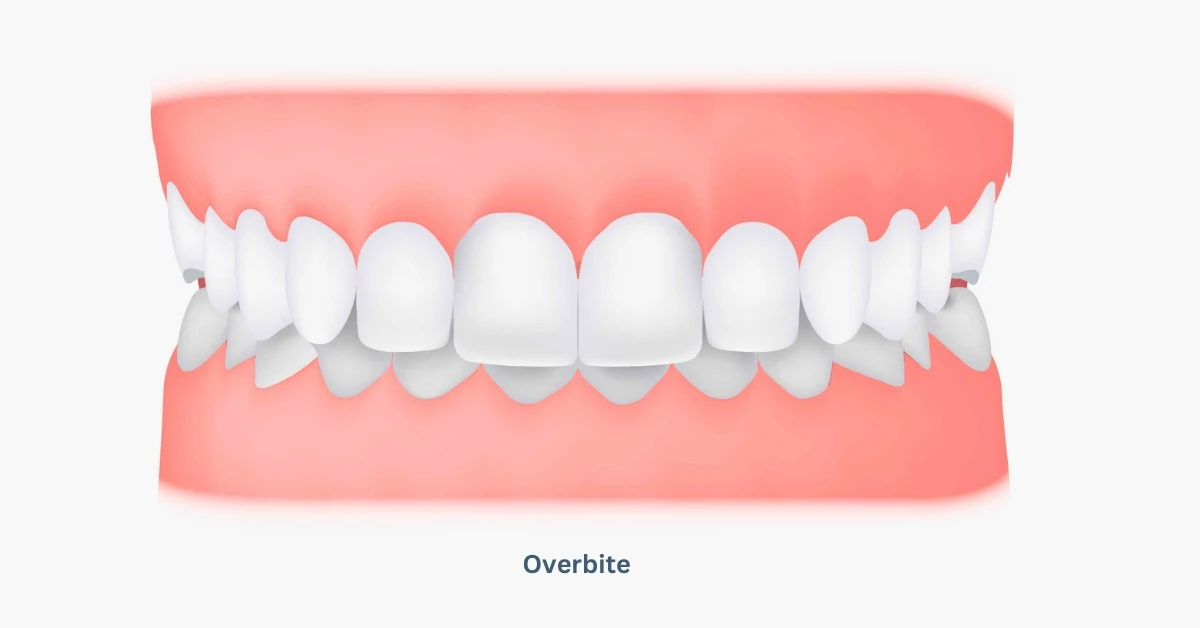Diastema is a dental term for a tooth gap that mostly exists between the front two teeth but can happen anywhere in the mouth. However, the front upper section teeth are precisely affected by this condition, which can create a cosmetic concern for people.
Types of Diastema
- Genetical diastema
- Diastema caused by gum disease
Its Impact on Dental Health
Most of the time, diastema doesn’t impact dental health. If the tooth gap is caused by a gum infection, including swelling or redness, then it is a severe case requiring immediate medical attention.
Causes of Diastema
1. Natural growth and development
You may also develop diastema if the tissue bordering your gum line and your two upper front teeth overgrows. This overgrowth causes a separation between these teeth, resulting in a gap.
2. Genetics and inherited traits
In most cases, tooth gaps are seen as genetic and inherited traits. This means the gap trait is passed on by parents or grandparents.
3. Habits
Children who suck their thumb for long hours may form a gap with time. The sucking motion puts pressure on the front teeth, causing them to pull forward. Similarly, tongue thrusting also causes tooth gaps.
4. Gum disease and tooth loss
Certain tooth gaps can also develop from gum disease, which is a type of infection. In this case, inflammation damages the gums and tissue supporting the teeth. This can lead to tooth loss and gaps between teeth. It also includes red and swollen gums, bone loss, loose teeth, and bleeding gums.
5. Dental Malocclusions or Tooth Misalignment
In some people, this condition is related to the size of their teeth and the size of their jaw bone. Gaps may form when a person’s teeth are too small for the jaw bone. As a result, teeth are spaced too far apart.
Symptoms of Diastema
1. Visible Gaps Between Teeth
The typical symptom of diastema is visible gaps between teeth, especially between the front two teeth. Sometimes, the gaps exist between more than two teeth and can be spread throughout the mouth. The visibility of the gap can vary depending on the size and location of the diastema.
2. Psychological Effects
Primarily this is an aesthetic concern which affects the smile of a person and can have psychological toll to some people. The prominent gap between the front teeth can become a cosmetic concern making them more self-conscious or lack confidence to smile or communicate with others.
3. Gum Irritation or Discomfort
If the diastema is large enough, the gum tissue between the teeth may become irritated or inflamed. If not cleaned properly, food particles can become trapped in the gap, causing gum irritation or discomfort. Thus, if the diastema is not properly maintained, it can also be a sign of potential dental issues.
4. Speech Impediments
A larger diastema, particularly between the front teeth, can sometimes cause speech impairments such as lisps. Certain sounds, such as ‘s’ or ‘th’, require touching the front teeth during the process, making it difficult to utter such words or pronounce them properly.
5. Potential alignment issues
In some cases, a diastema may be accompanied by other alignment issues or dental irregularities. For example, the gap between the front teeth may be caused by a misaligned dental midline, where the central gap is not centered between the two front teeth. Additionally, a diastema can sometimes be a symptom of an underlying bite problem or malocclusion, where the upper and lower teeth do not align properly.
Also Read
Diagnosis and Tests
Diagnosis of diastema is simple as the doctor in his primary consultation can detect the gapped teeth. No further test is required to do so.

Treatment Options for Diastema
Treatment for a diastema may or may not be necessary, depending on the underlying cause. For some people, a diastema is nothing more than a cosmetic issue, and it doesn’t indicate a problem like gum disease. For severe or multiple gapping, the following treatments are considered.
1. Orthodontic treatment
The most common and comfortable treatment methods for teeth gaps are traditional metal braces and clear aligners. While metal braces include metal attachments such as arches and wires, clear aligners are clear plastic dental trays that are snugly fitted to the teeth.
Metal braces are fixed and attached to your teeth. Both of the treatment methods are meant to generate pressure in the teeth that move them toward the desired destination.
2. Dental bonding
Dental bonding, or teeth bonding, is a process in which your dentist applies a tooth-color blended resin material to conceal the tooth gap. Then, your teeth are shaped and polished for a natural appearance. This is not a painful procedure.
3. Veneers
Porcelain veneers are a very much used procedure to conceal teeth gaps. These are custom-made ceramic shells that permanently adhere or are fixed to your front tooth surfaces. They can close down a gap between the teeth for a more uniform look.
4. Crowns
A dental implant replaces a missing tooth and can fill up the gap created by the tooth loss. An implant is a threaded titanium post that replaces a missing tooth root. Once it’s healed, a dental crown is fixed to it to restore and close the gap between your teeth.
5. Gum surgery
A frenectomy or gum surgery releases the band which connects your lip to the gum of tissue. In many cases, frenectomy is performed in combination with another cosmetic procedure, such as dental bonding or veneers.
6. Gum infection
If your teeth gap is a result of gum infection, several treatment methods are available to treat the infected gum. For mild infections, scaling and root planing, which is a kind of deep dental cleaning, is recommended. In severe gum infection cases, Gingival flap surgery might be helpful, as per your dental experts.
Prevention and Management
1. Early Intervention for Childhood Habits
It is important to keep an eye on your little one and intervene at the right time so that the condition does not get worse over time. Habits such as thumb sucking, which is continuous and vigorous, pacifier usage, sucking pencil or other objects should be checked at an early age.
2. Proper Oral Hygiene Practices
Good oral hygiene practices are the backbone of a healthy smile. You should practice brushing (two times) and flossing, followed by using mouthwash every day without a miss. Encourage the other family members to follow the same routine to keep up with good oral health.
3. Regular Dental Check-ups and Cleanings:
For best results and a worry-free life, you may go for dental check-ups twice a year. Ask your dentist about cleaning methods for your teeth and avoid becoming frantic about trying dental cleaning by an expert. Also, the most significant role in keeping your pearly whites beautiful and healthy is to be proactive in maintaining oral hygiene.
Final Verdict
Understand that for any dental issues, be it bite misalignment or gap teeth it is advisable to take medical attention as soon as possible to get timely and ultimate results. This way you can reduce your suffering time.
Diastema which is the medical term for a tooth gap is basically a cosmetic concern and the treatments also come under cosmetic dentistry. Most of the time this condition does not require any dental treatment. But yes, if you are experiencing other symptoms or discomforts, or if the gaps are caused because of gum disease or caused by any accident or so, you should not wait to make the condition worse.
Visit an expert dentist and get back with a beautiful smile. For more information on dental issues, consult with our orthodontist.
FAQs
Diastema is common in children during the period of baby teeth. However, it generally disappears as they grow and acquire permanent teeth.
Diastema is generally a cosmetic concern that does not affect overall oral health. If it is caused by a gum infection, the situation may be treated soon.
In some cases, diastema can be prevented in early childhood by checking for bad habits and developing good oral habits. For adults, orthodontic treatments are advisable for good results.
Gaps can develop anywhere in your mouth, though the gap between the front two teeth is prominent. This doesn’t affect your oral health, but you may want to take the doctor’s advice.
Diastema can sometimes increase with age due to factors like gum recession, tooth loss, or changes in dental alignment, although this isn’t always the case and varies among individuals.
In most cases, diastema is a cosmetic concern, and people often do not feel confident enough to smile because of the gap between their teeth. In rare cases, if there is more gap between the front two teeth, it may cause lisps.







